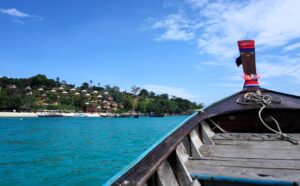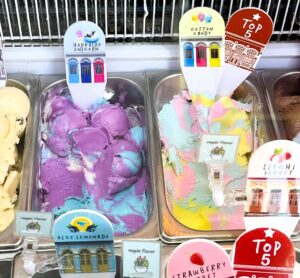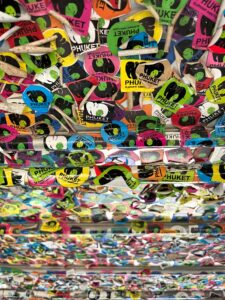Before travelling to Malaysia, I booked a day tour of Kuala Lumpur through WithLocals with Hoopy, who was lovely and took us to lots of places, teaching us a great deal about Malaysia and Malay culture. The tour we took, named ‘Understanding & Explore Multi-religion of Malaysia,’ was suggested by Hoopy and then tailored to our preferences. Unfortunately, we didn’t manage to go to all the places we had planned because we lost a lot of time in traffic back and forth, Maria Rita was showing signs of getting tired of ‘boring adult programmes’, and towards the end of afternoon, it started to rain heavily, making it difficult to visit the China Town area. A sign that I need to get back to Kuala Lumpur to complete the sightseeing!
Here are the main tourist attractions not to be missed:
Petronas Towers
The famous 88-storey towers are probably the most recognisable symbol of Kuala Lumpur. Make sure you buy your tickets well in advance here to avoid any surprises, like we experienced. Check out the Arrival in Kuala Lumpur post, where I explain how we ended up not being able to buy tickets for any of the days we were in the city.

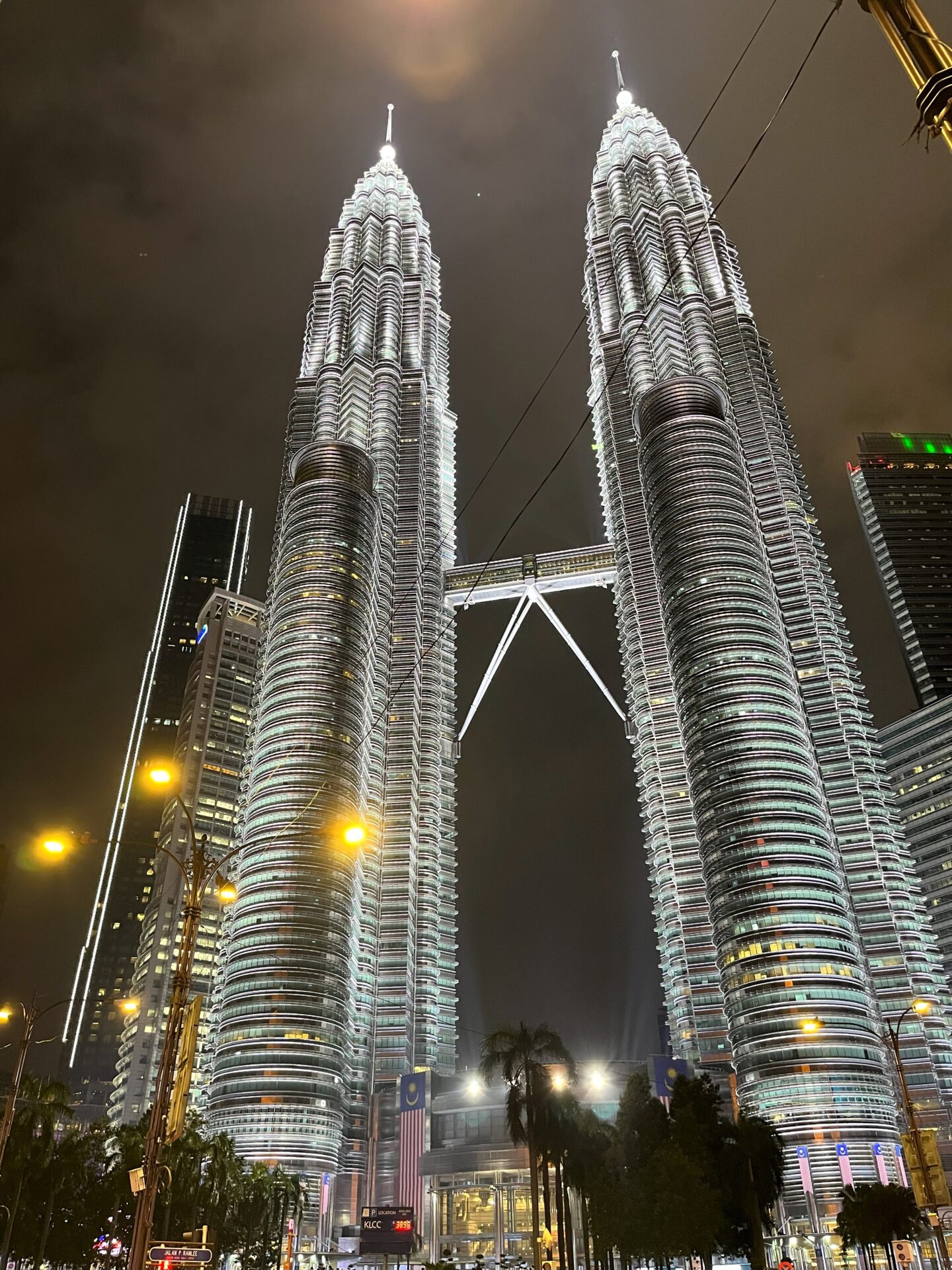
Batu Caves Temple
Guarded by the monumental statue of the Hindu god Murugan (Lord Murugan), to whom the temple is dedicated, these caves built within a limestone pillar, are home to a complex of Hindu temples, visited both by locals for prayers, and by millions of tourists.
To reach the main cave, you have to climb just 272 steps, so start practising! Once you´ve climbed the stairs full of monkeys (unfortunately many people were feeding them, which is not recommended), it’s impressive to see those huge caves with the brightly coloured Hindu temples, and the sounds of bells and prayers echoing through the caves. Read more about Batu Caves here.

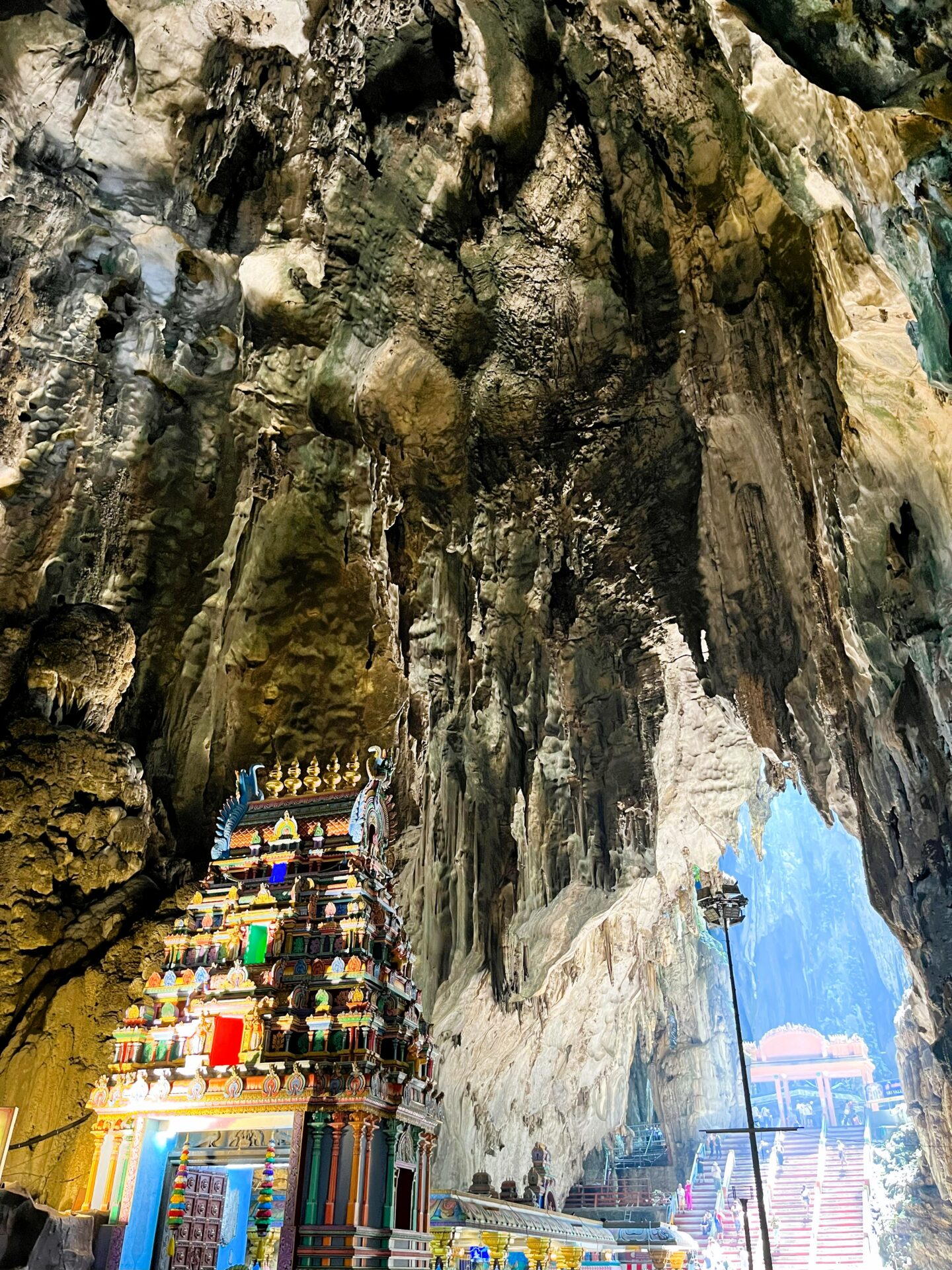

Wilayah Mosque
Kuala Lumpur’s mosque, whose name means ‘Mosque in a garden,’ combines Ottoman and Malay architectural styles and was strongly influenced by the ‘Blue Mosque’ in Istanbul, Turkey.
To visit the mosque, you must go with a guide from the mosque itself, and wear a kind of robe over our clothes, and a scarf to cover your hair in the case of women, all of which are provided at the mosque’s entrance.
We had been to the ‘Blue Mosque’ in Istanbul, and although this one wasn’t as beautiful, I found the visit very interesting. The tour helped us to understand more about Malay culture, as Islam is the official religion of Malaysia, and we had the opportunity to learn more about the customs and religious practices of a large part of the Malay population.

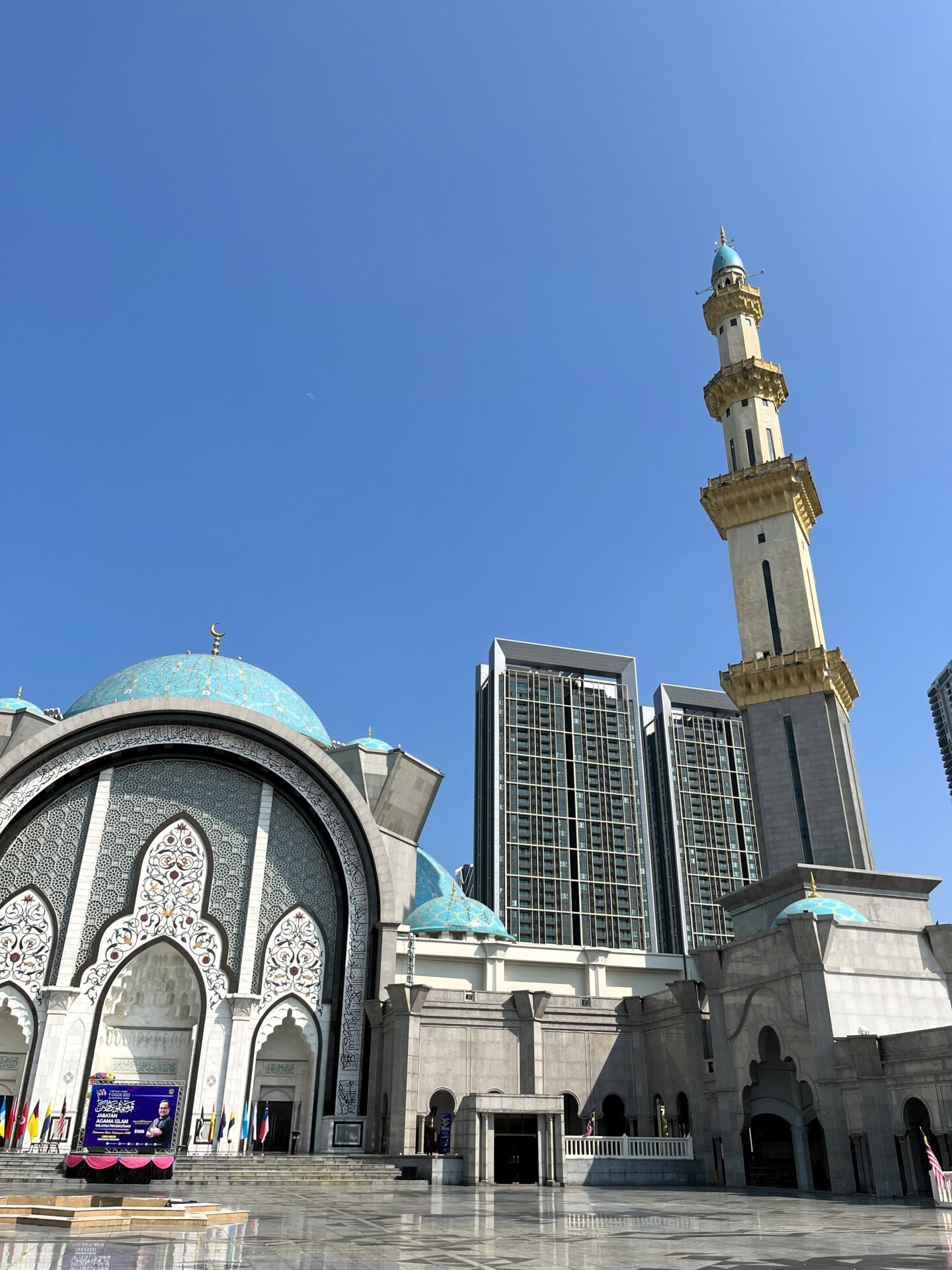
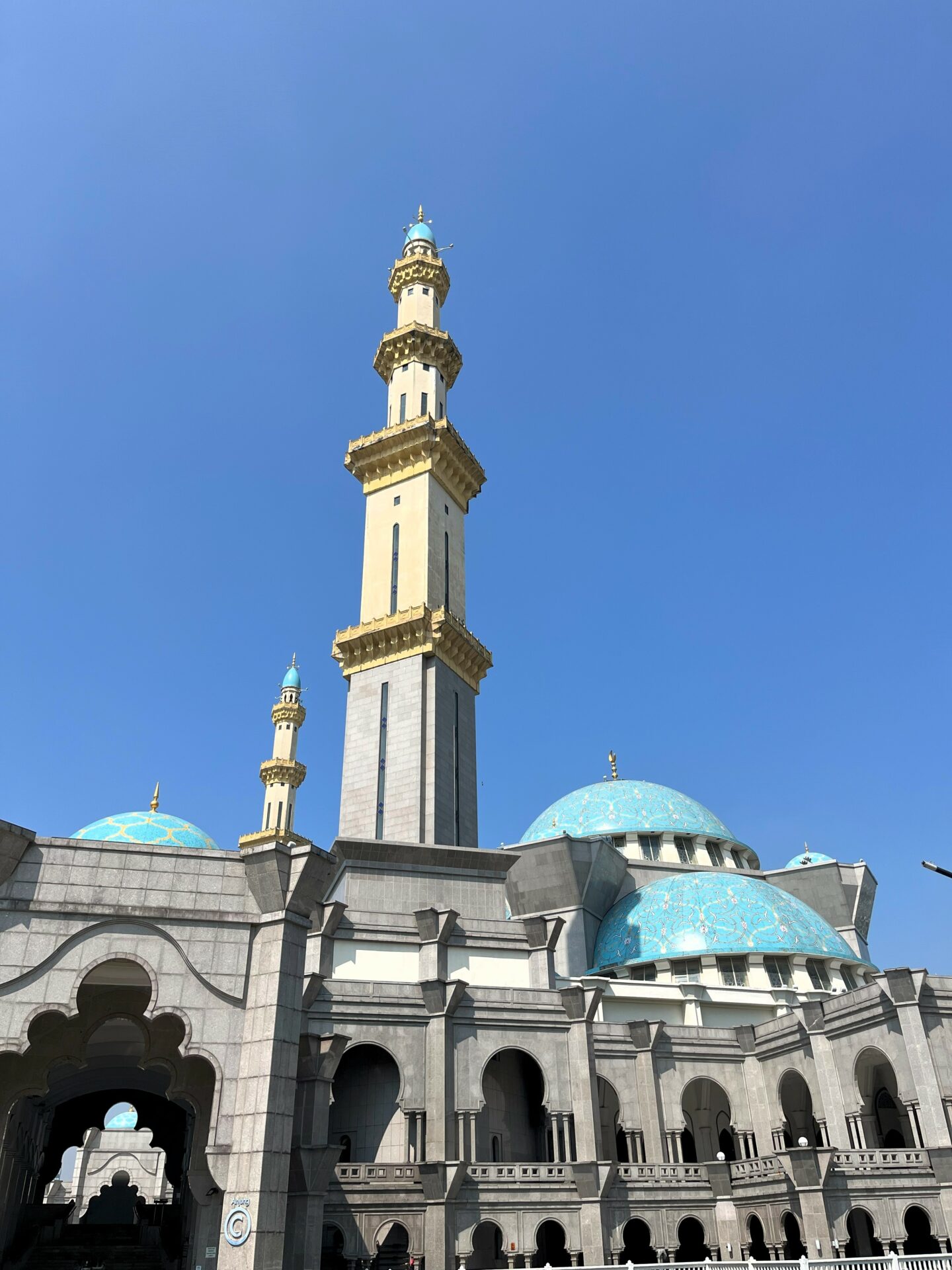
Thean Hou Chinese temple
This super colourful temple, with its classic Chinese architectural features, has a privileged view over Kuala Lumpur and is well worth a visit. The temple integrates elements of the cult of the Chinese sea goddess Mazu, with Buddhism, Taoism, and Confucianism.
Our guide Hoopy invited me to pray with her, and also to throw fortune telling sticks, and I got an answer that was exactly related with the question I had thought before dropping the sticks – coincidence? 😊
More information about the temple can be found here, including the address and opening hours.
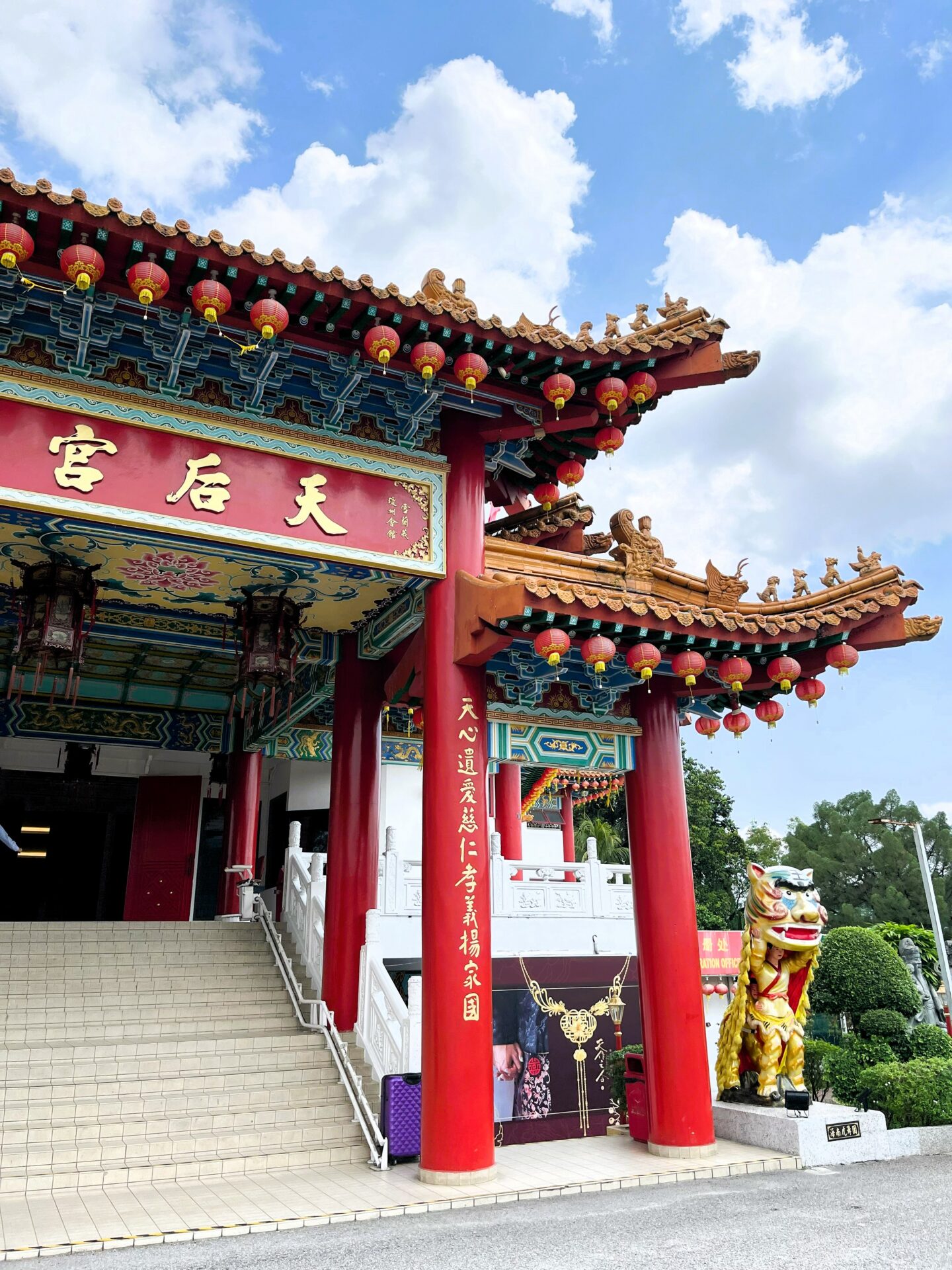
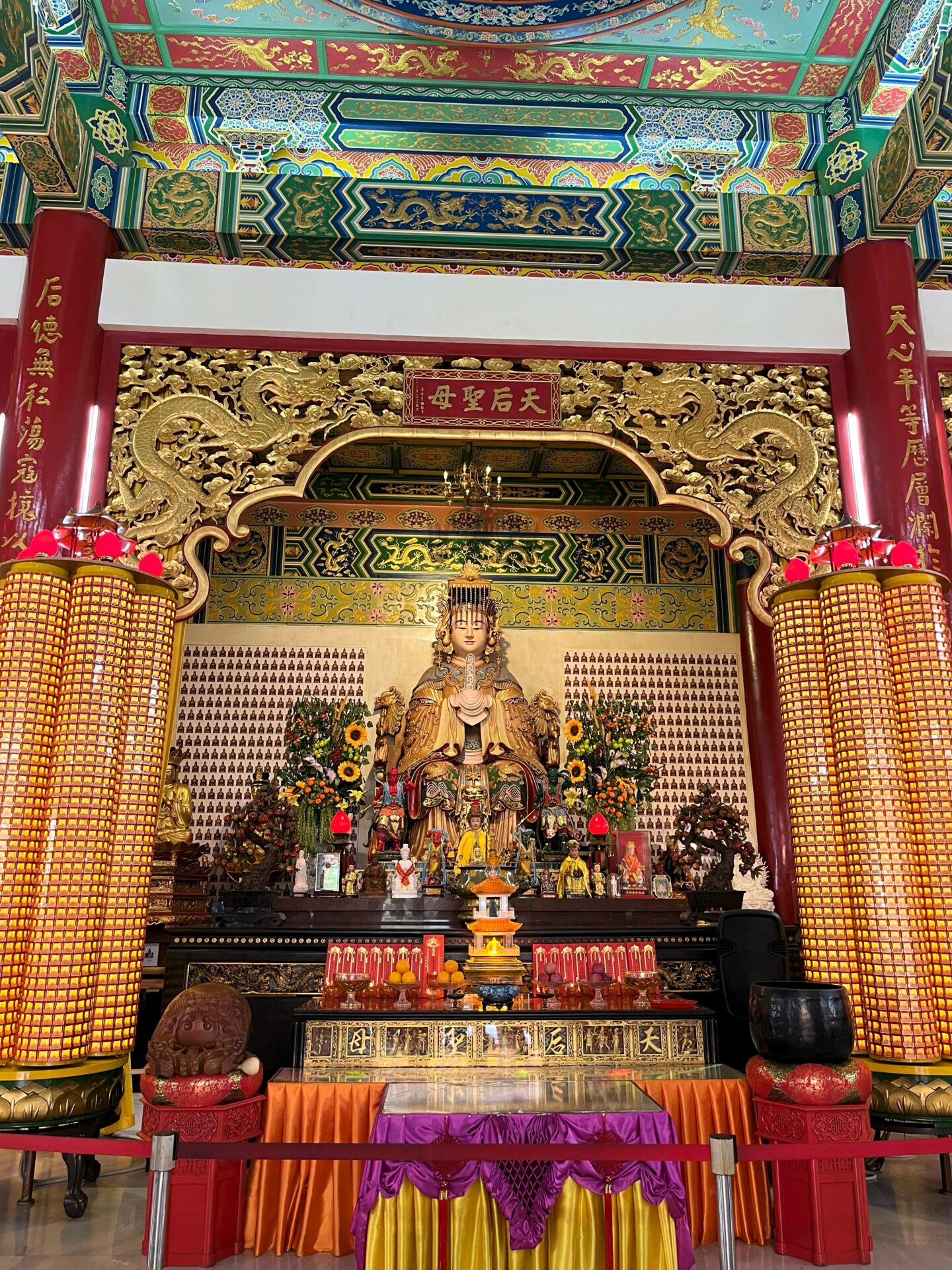
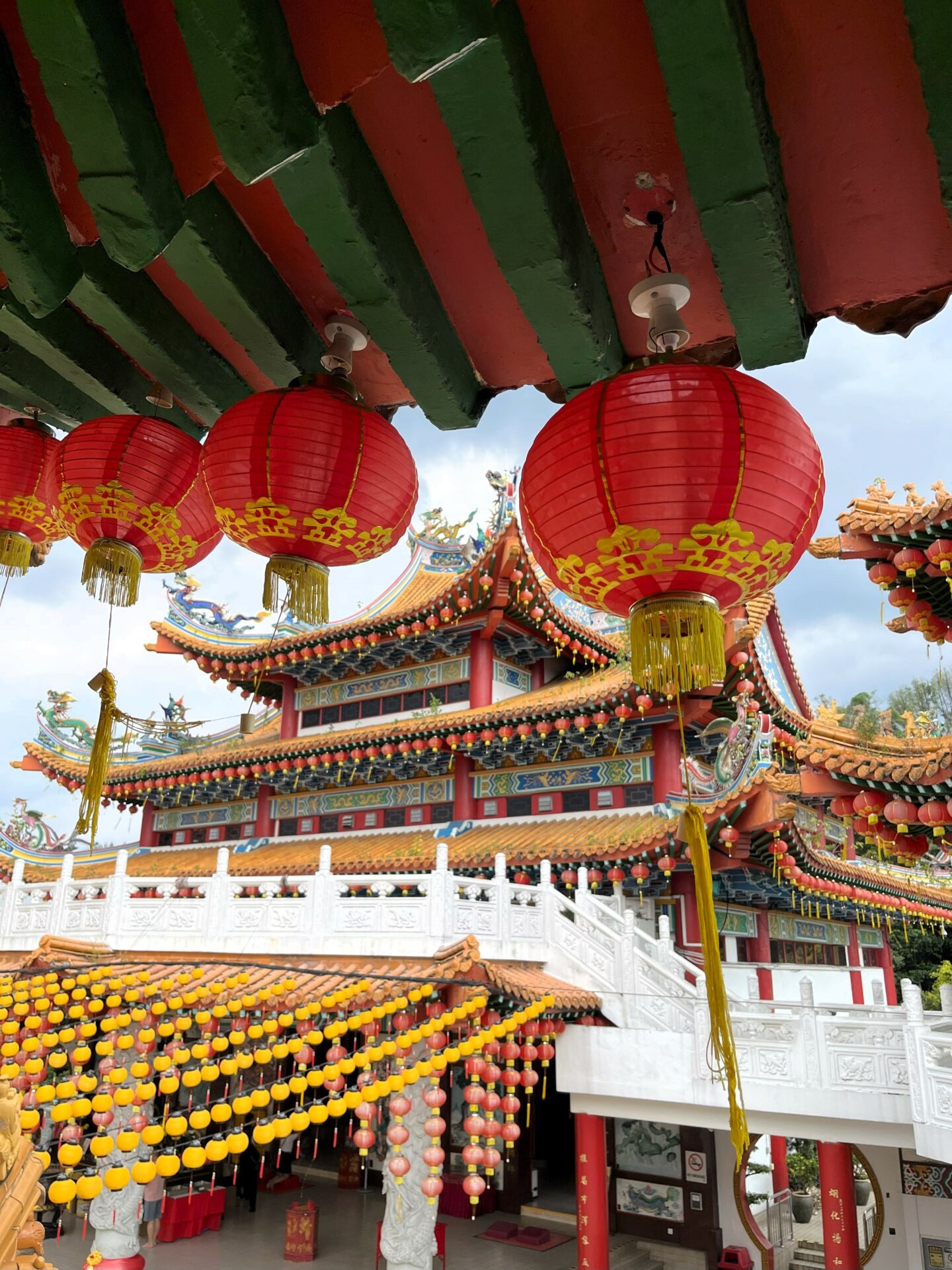
All the religious sites we visited are free to enter, so it’s suggested that you make a donation at the end of the visit in the boxes provided.
Central Market
Classified as a landmark and heritage of Malaysia, the Central Market offers a variety of local souvenirs, handicrafts, and clothing. Next to the market is the following attraction, Petailing Street, so you can visit both in one go. More information here.
China Town (Petailing Street)
At this street market you’ll find many options for local food, so you can plan your visit for lunch or dinner times. Besides food, this street is also known for counterfeit trainers, t-shirts, watches, as well as plenty of local souvenirs.
KL Tower
We had planned to go up the KL Tower as a sort of consolation prize for not being able to visit the Petronas Towers, as our guide said you just need to buy the tickets upon arrival. At the end we didn’t make it, but the tower is commonly referred as a must visit in Kuala Lumpur. More information here, or on the Facebook page for announcements related to the opening hours.
Saloma Link Bridge (Pintansan Saloma)
This pedestrian and cyclist bridge, whose architecture was inspired by elements of Malay culture, was inaugurated in 2020, connecting the Kampung Baharu area to the centre of Kuala Lumpur. The Saloma Bridge, named after the Singaporean-Malay actress and singer, was eagerly awaited by the people of Kampung Baharu, as it reduced the travel time from 30 minutes to just a 7-minute walk to reach the centre of Kuala Lumpur.
It should be visited at night for the ever-changing patterns of lights, and the view of the illuminated Petronas Towers at the end of the bridge. Today, the bridge is popular with many locals and tourists, especially for photo shoots, and you can find many photographers offering their services here.
The bridge is a short walk from the Suria KLCC shopping centre, and from there you just have to head towards the Public Bank Tower (or Menara Public Bank). So, we went to the Saloma Bridge after the shopping mall’s light show, called Lake Symphony, which happens daily at 7:30 pm, 8:30 pm, and 9:30 pm. Read more about the show here. I must warn that for those who have seen the Spectra show at Marina Bay Sands in Singapore (Spectra info here), this one in Kuala Lumpur might be a bit disappointing.
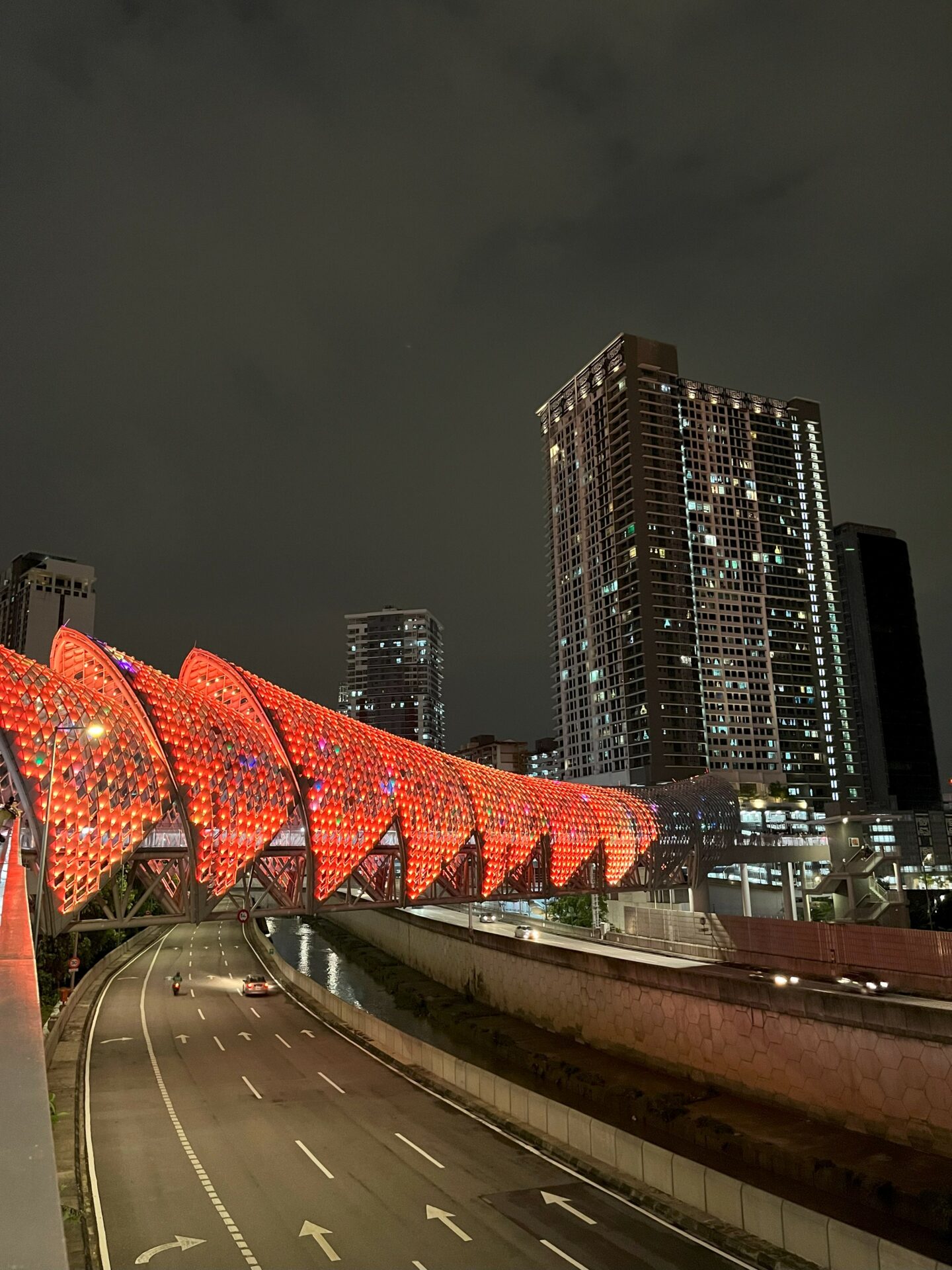
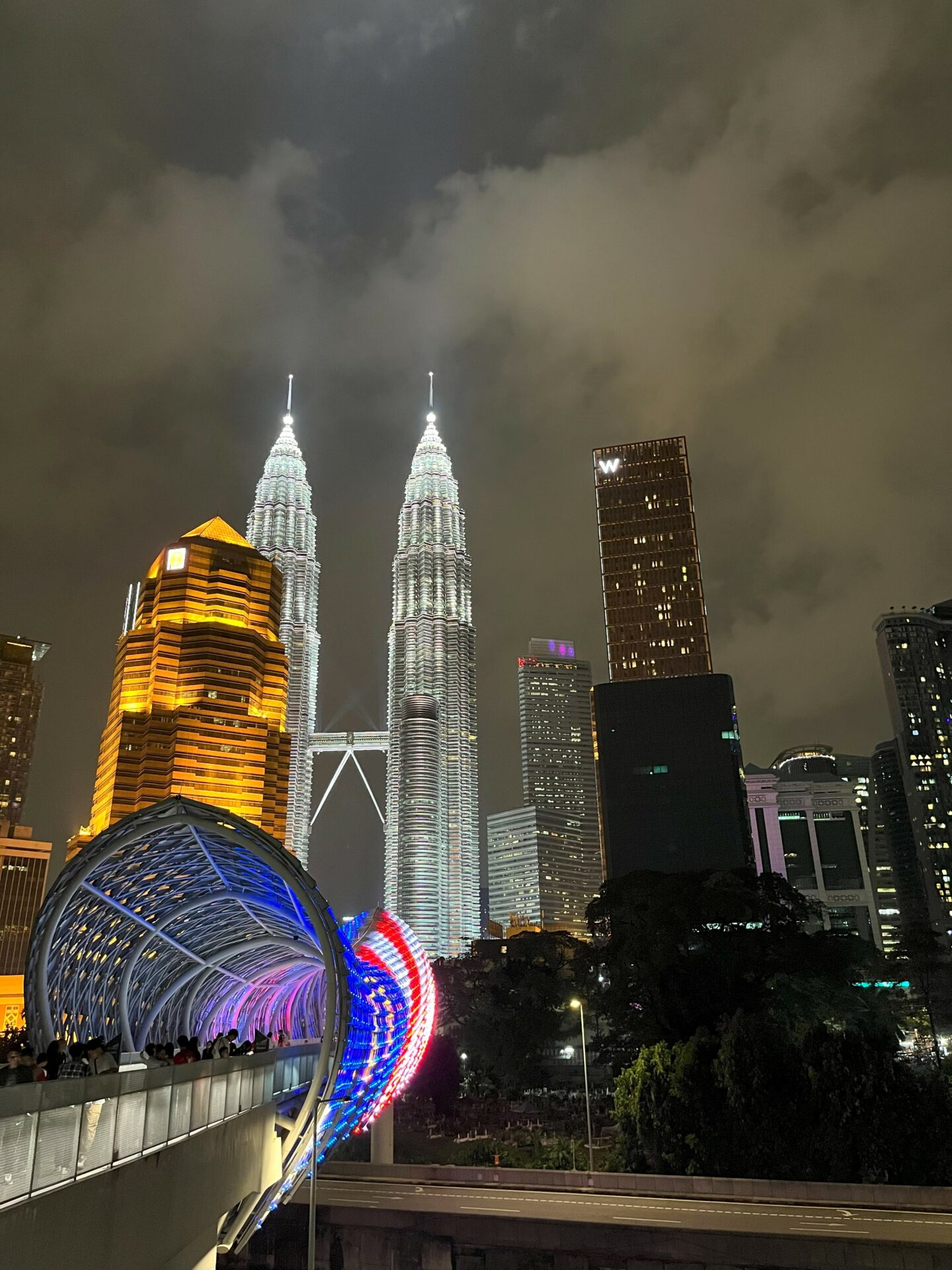
Independence Square (Dataran Merdeka)
This is the square where Malaysia declared its independence from British rule on August 31 1957. Next to the square is also the Kuala Lumpur City Gallery, home to the popular ‘I love KL’ sign, highly sought after for taking photographs. The Independence Square faces the Sultan Abdul Samad Building, listed below.
Sultan Abdul Samad Building
Inaugurated in 1897, the Sultan Abdul Samad Building was originally used to house the offices of the British colonial administration, then known as the Government Offices. If you can, stop by, even if only by car. The building has a unique architecture that combines Moorish style with British and Islamic elements. For more information on this building, click here.
River of Life
Located at the confluence of two rivers in the heart of Kuala Lumpur (Klang and Gombak), the River of Life is also an urban renewal project that began in 2011, which has revitalized this riverside area of the city by treating and cleaning the river waters, and rehabilitating the entire surrounding area, turning it into a leisure space easily accessible to the local communities, as well as a tourist attraction. It can be visited during the day for a walk where you can admire the murals on the banks of the river, the Jamek Mosque (also known as Masjid Sultan Abdul Samad), and the attractions mentioned in the two previous points: Independence Square and Sultan Abdul Samad Building, as they are all nearby.
If you go at night, this area of River of Life takes on a new life (and blue colour) with the combination of water fountains, small jets of water that create a mist illusion, and synchronized lighting.
Find out more about this project on its official website. Here, you’ll also find places to eat, drink, and shop near the River of Life, as well as other attractions in the area mentioned above.
If you get the chance, you can also visit the National Palace of Malaysia (Istana Negara). The national palace of Malaysia is the official residence of the King of Malaysia, and although you can’t go inside, you can take pictures of the exterior where the royal guard is located.
Tip for getting around in Kuala Lumpur
During our stay in Kuala Lumpur, we used Grab a lot to get from one place to another. Grab is the Asian equivalent of Uber. And of course, this was only possible thanks to the Airalo mobile data package. Find out more about Airalo here and check if your phone model supports eSIM here.
Final thoughts on Kuala Lumpur
As you can see from this endless list, there is no shortage of things to do in Kuala Lumpur, or simply KL (kay-el), as it is known in Asia. I recommend at least two full days to get a glimpse of the city. We stayed for a day and a half, and it wasn’t enough to see everything. Maybe you can do it non-stop, but it’s harder with children. I still hope to return to KL to complete this list of attractions and discover many more!
Don’t miss the posts on Kuala Lumpur restaurants and Kuala Lumpur hotels.
*This post contains affiliated links, and if you make a reservation/purchase through them I may earn a small commission at no extra cost you.
